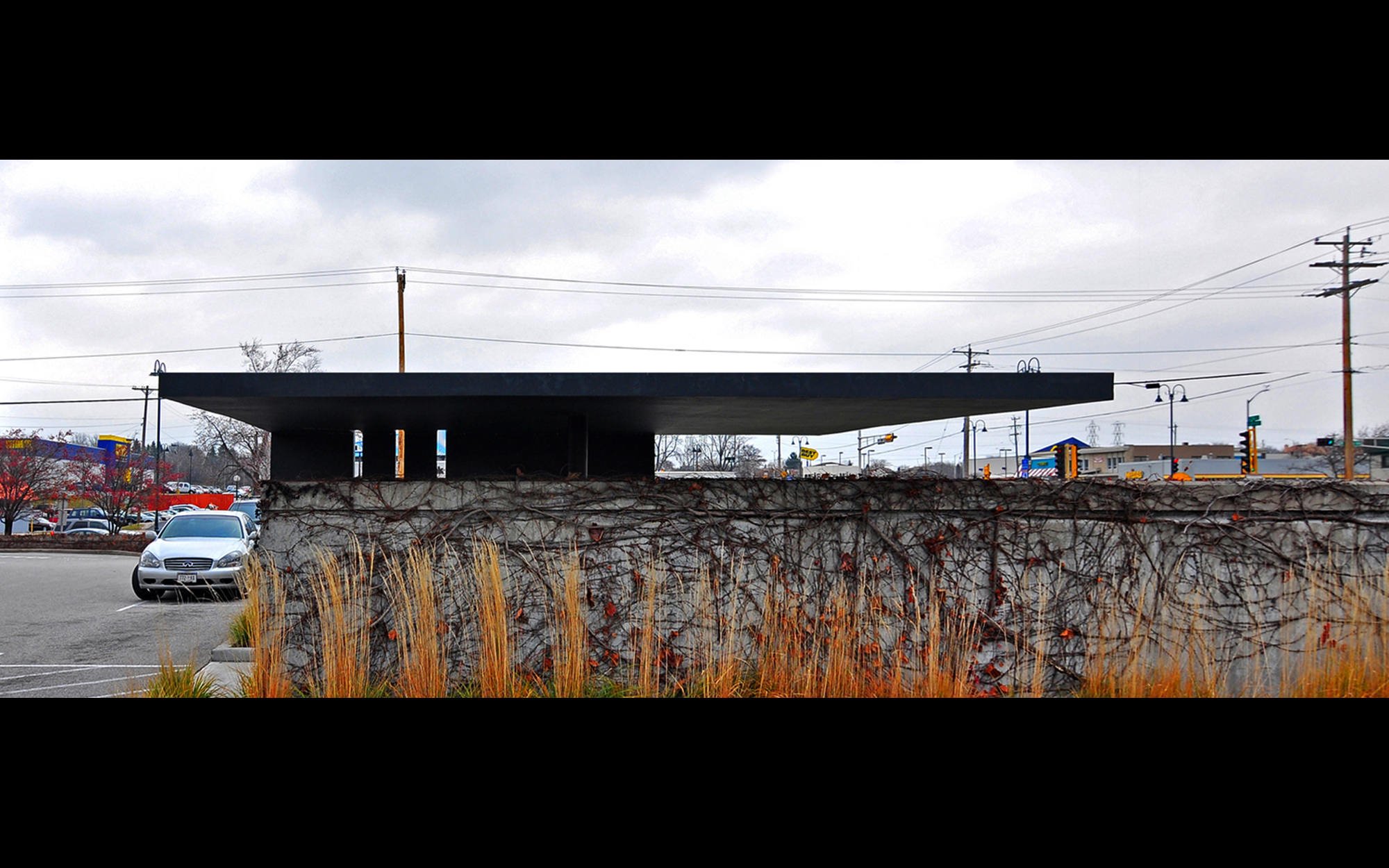layton pavilion - greenfield, wisconsin
A small architectural intervention embedded in the spatial vacuum of suburbia, the Layton Pavilion functions as a gatehouse connecting a large strip mall parking lot and a walled-in, undevelopable brownfield site used as a provisional public green space along a busy suburban intersection. Working with a limited stipend, we designed a simple cast-in-place concrete pavilion, a skim-coated apron that hovers over the southwest corner of the brownfield site and marks the link between the two spaces. The crisp, austere form, its unapologetic blackness a stark contrast to the beige cheerfulness of its surroundings, creates an unexpected sense of gravitas in the weightless monotony of the suburban landscape.
Surrounded by an abundance of aesthetic timidity and literally leading from nowhere to nowhere, the pavilion itself becomes the destination, a reinterpretation of the archetypal folly in the park that offers a series of basic visceral and corporeal experiences rarely found in this context: the sudden spatial compression when entering; the controlled framing of views and vistas, through slits, walls, and roof; an occupiable object carefully scaled to be encountered by walking people, not speeding cars; the polished concrete planes, their tangible solidity and material authenticity a peculiar exception in an environment dominated by the antiseptic shallowness of thin veneers. The linear raingarden located below the roof edge allows stormwater to percolate into the ground, its native prairie grasses a welcome reprieve from the surrounding sea of asphalt.
Spatiality, scale, materiality – the Layton Pavilion reintroduces these fundamental concepts to the experientially impoverished realm of the urban periphery. Empty and ominous as it sits in the middle of the suburban void, it serves as a quiet monument to the richness of the human condition.






